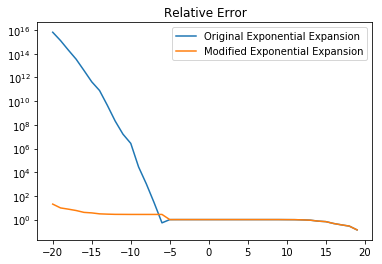Method: Condition Number in Numerical Analysis
Condition number of a function measures how much the outputof the function (ie. ) can change for a small change in the input (i.e. ). The number evaluate the sensitivity of the function when error or change encounted in input.
Function with a low condition number is said to be well-conditioned or ill-conditioned when condition number is high.
Consider the following set-up:
and \ where
Question: What is the impact of perturbation of , with respect to ?
Example : We are interested in solving the problem
, , ,
Assuming to be regular , we obtain
Consider a perturbated problem, we need to address the following problem:
where , , ,
There exists a rule of thumb of conditionn number : If , it indicates you may lose up to digits of precision
Here gives an simple example of Addition:
In this example, we have high condition number if . In other words, the function is not stable when
Apart from that, the following examples also give high condition number:
- Finite Difference: $$ \frac{f(x + h) - f(x)}{h}$$
- Exponential Expansion: $$ e^{-10} = 1 - 10 + \frac{100}{2} - \frac{1000}{6} \cdots $$
The function is ill-conditioned when . To avoid the instability, we can simply change our problem to for . The follwing grpah gives a comparision to original problem and modified problem by calculating the relative error:

From the above example, we can know that stability is an character in evaluating uncertainty of a model since small perturbation may lead to exponential effect in ill-conditioned model. In the later session, we will learn how to quanifying uncertainty step-by-step.
